
Although termites can benefit the environment, they can be silent destroyers to your home’s structural integrity. They cause extensive damage before you realize there is a problem. The average homeowner will spend approximately $3,000 in repairs once they realize there is a termite problem. These insects cause around $5 billion in damages in the U.S. annually.
Swarmer termites in Myrtle Beach can signal an infestation with discarded wings or visible insects around your home. It’s essential to take measures to avoid these insects and take action the second you see signs of them.
Swarmer Termites: All You Need to Know
Here are some specifics to help identify this pest.
What Do Swarmer Termites Look Like?
Swarmer termites are black, dark brown, beige, red, or tan, depending on the species. They have six legs and straight antennae.
Unlike other insects, these pests have a thick, elongated body section without segments.
Swarmer termites sport four wings, each of equal shape and size. These wings are double their body size, are see-through without color, and have a veiny appearance.
Once termites mate, they drop their wings.
Swarmer Termite vs Flying Ant
Swarmer termites have straight antennae. On the other hand, flying ants’ antennae have a bend in them. Swarmer termites are also easily distinguished by their thick, broad one-section body. Alternatively, flying ants have a pinched waist that separates the thorax from the abdomen.
Although both swarmer termites and flying ants have wings, they appear differently. These troublesome termites will have two sets of wings of equal size. Their wings are double their body size. In addition, they will be see-through and have a vein-like appearance.
Flying ants will also sport two sets of wings, but the front set will be larger than its back set. These wings are brown and more proportionate to the ant’s body size.
If you are unsure which pest plagues your home, the professionals can help you quickly identify your problem.
 Are Swarmer Termites Dangerous?
Are Swarmer Termites Dangerous?
Homeowners may be concerned with their safety if they face termite problems. So naturally, not knowing what an insect is capable of can be nerve-wracking. Thankfully, swarmer termites aren’t a health risk and do not often bite humans.
Still, these common pests can harm your home’s structural integrity and cause extensive damage. If they go unnoticed and untreated, there can be a risk to personal safety and bring an expensive repair bill to a home where swarmer termites reside.
Termites can enter a home through air vents, cracks in the exterior, or by eating through wood features. They feed on items that contain cellulose, including wood items and paper products, to get energy and reproduce.
Swarmer Termite Season
Swarming is a necessary stage of the termite’s lifecycle. It is the time when termites reproduce when they have outgrown their current colony and need to expand elsewhere. Swarms contain both male and female termites. Depending on the colony size, they may consist of hundreds or even thousands of insects.
It will typically happen after rainfall on a warm spring day without wind. These conditions are ideal for finding a mate and growing a new colony.
The subterranean termite’s swarming season happens only once per year, usually during the spring and early summer months. Still, some species of termites will swarm in the late summer and early fall.
Thankfully, termite swarms do not last long and are over after 30 to 40 minutes. However, this short period is significant enough for these pests to find their mate and a new place to call home.
Do’s and Don’ts During Swarmer Termite Season
Being proactive during swarmer termite season can ensure you catch an infestation before it becomes disastrous. You may also be able to prevent termite activity from entering your home at all.
Do’s:
- Include the exterior when checking for termites. Inspect any cracks or holes for discarded wings, droppings, or dead insects.
- Vacuum up any termite swarmers that you see. You can discard the vacuum bag or canister contents in the trash.
- Call local pest control when you spot swarmer termites. Seeking a professional pest control service is the best action to ensure the problem is resolved.
Don’ts:
- Don’t remove or open walls. Sustaining the integrity of the structure is critical for effective treatment.
- Don’t spray the swarmer termites. Watching them will indicate where they are coming from or entering a home for further treatment.
- Don’t delay taking action because the longer you wait, the more damage they can cause.
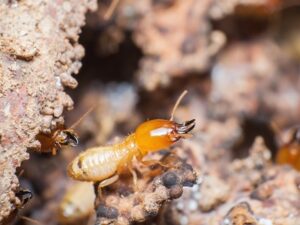 How to Get Rid of Swarmer Termites
How to Get Rid of Swarmer Termites
Although spotting winged termites can be problematic, worker termites are the ones that do the real damage. Getting rid of swarmer termites is not a simple job. Someone who attempts the task alone may miss the workers, that will continue to cause harm.
Additionally, many homeowners find the task overwhelming to complete themselves. Having the help of a professional will mean that it is done properly. A trained pest control technician uses comprehensive methods to ensure that the entire colony is treated and removed rather than just the ones you see.
If you want to try some methods on your own, here are some techniques that may provide some relief:
- Direct Sunlight or Freezing Method: If the infestation is within an item like a chair or shelf, remove it from the house. Put it in direct sunlight or a freezer for several days.
- The Cardboard Trap: Use two pieces of cardboard, wet them, and stack them on top of each other in a place where you have an infestation. It will attract termites; when it contains pests, remove it and burn it safely. You can repeat this process, but it will not eliminate the colony.
- Use Boric Acid: Homeowners can coat bait stations or cardboard traps with boric acid. It will attack their nervous system and dehydrate them when eaten, resulting in death.
Do Swarmer Termites Indicate an Infestation?
If you see swarmer termites, it may not mean that your home has an active infestation, but it is concerning. Swarms indicate that a colony is nearby. If you do not care about the problem, you may quickly have an issue with these pests in your home.
The time of day swarmer termites make their debut will depend on their species as some prefer warm daytime hours, while others come out at dusk.
New colonies will be small and take time to grow and mature. On average, a colony is large enough to start creating swarms after five years. Unfortunately, a building might be damaged before homeowners even see a swarm.
Signs of a Termite Infestation
If you know what to look for, you can identify a termite infestation sooner rather than later.
Discarded Wings: You may find dropped wings around window sills, doorways, or other areas of the home.
Frass: This is the excrement from termites that resembles loose sawdust.
Hollow Wood: Tapping on window sills or baseboards that sound hollow can indicate termites eating through the wood.
Mud Tunnels: These come from the soil to the colony and combine mud, termite saliva, and wood. They protect the termites as they move.
Wood Damage: Termite damage often resembles water damage on wood areas. It is similar to rot but will have dry and hollow holes within the wood.
Say Goodbye to Swarmer Termites!
Unfortunately, if you spot swarmer termites near your home, it often means that a mature termite colony is near. An established colony with swarms will mean that these pests have been around for years, causing damage.
Because signs of termites can go undetected for a long time, finding a solution is critical once you recognize a problem. Contact Zap Pest Control Inc. today so we can do a proper termite inspection and help determine how much damage you are facing. We’ll get rid of your termite problem in no time.
Like our Facebook page for more great info about pest control services.
Zap Pest Control Inc.
2507 Forestbrook Rd Suite G
Myrtle Beach, SC 29588
843-654-1927
http://zappests.net/

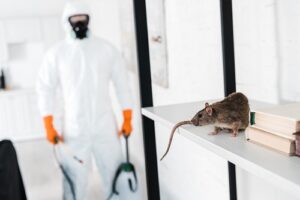 Safety First
Safety First

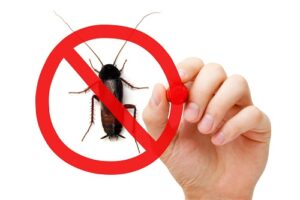 Another summertime pest is bees whose sting is very painful and may even cause death in the case of a person with an allergy. It is advisable not to get too close or near their nesting places. Ants are very harmful to humans since they destroy wood by creating nests which they then use to lay eggs and bring up their young.
Another summertime pest is bees whose sting is very painful and may even cause death in the case of a person with an allergy. It is advisable not to get too close or near their nesting places. Ants are very harmful to humans since they destroy wood by creating nests which they then use to lay eggs and bring up their young.
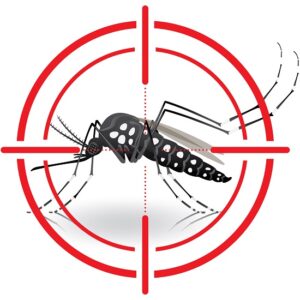 Trim areas that are overgrown, shady and moist. This will help prevent infestations.
Trim areas that are overgrown, shady and moist. This will help prevent infestations.
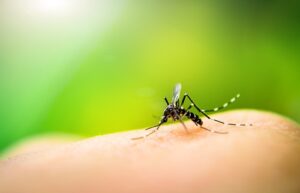 Mosquito prevention tips for your property
Mosquito prevention tips for your property

 Are Swarmer Termites Dangerous?
Are Swarmer Termites Dangerous? How to Get Rid of Swarmer Termites
How to Get Rid of Swarmer Termites
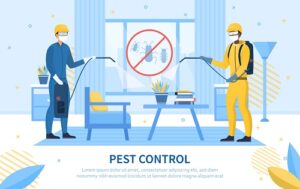 If you check the internet, you will find many pest control companies in your area. You can even ask your friends, relatives, and coworkers if they have hired an exterminator before so that you don’t have to worry about the quality of the service you’ll get. A pest control company would also offer services such as thermography and
If you check the internet, you will find many pest control companies in your area. You can even ask your friends, relatives, and coworkers if they have hired an exterminator before so that you don’t have to worry about the quality of the service you’ll get. A pest control company would also offer services such as thermography and 
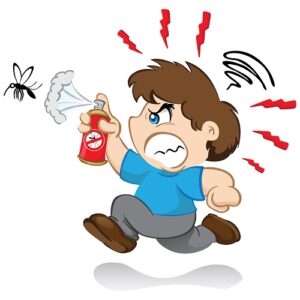 Five No-Nonsense Mosquito Prevention and Pest Control Tips
Five No-Nonsense Mosquito Prevention and Pest Control Tips
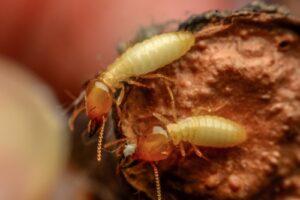 You’ll see many of the same symptoms if your home has been infested by dry wood termites. The mud tubes are an exception. Drywood termites are not subterranean, and so do not create tubes on the foundation walls. Frass is excrement and sawdust that they leave behind as they dig their tunnels.
You’ll see many of the same symptoms if your home has been infested by dry wood termites. The mud tubes are an exception. Drywood termites are not subterranean, and so do not create tubes on the foundation walls. Frass is excrement and sawdust that they leave behind as they dig their tunnels.
 How to Get Rid of Fleas and Ticks
How to Get Rid of Fleas and Ticks